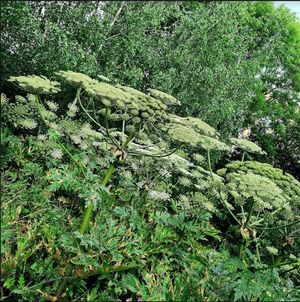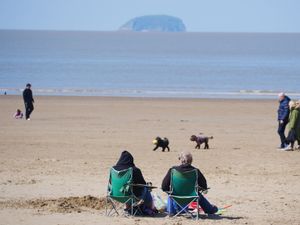'Children are particularly vulnerable': Residents warned about plant that causes scars and blisters
A national trade body is advising Black Country residents to be cautious of giant hogweed, an invasive weed that can cause severe blisters and burns when making contact with skin.
Watch more of our videos on ShotsTV.com
and on Freeview 262 or Freely 565
The dangerous plant was brought to the UK in the 19th century and has plagued green spaces ever since.
The Property Care Association (PCA) is sounding caution as the sap of the invasive non-native weed is extremely toxic, making it a danger to public health a concern for residents across the region in the coming months.
With two wet springs this year and in 2023, experts at the PCA say weather patterns are creating an opportunity for the plant to thrive and gain ground across the UK.
Contact with any part of giant hogweed, followed by exposure to UV light - including the sun - can cause severe discomfort and blistering to the skin.

Daniel Docking, technical manager of the PCA's Invasive Weed Control Group, says making people aware of its presence, and the health implications associated with exposure to it, are key to creating a safer environment.
He said: “Too often there are reports of people who have been injured after inadvertently coming into contact with giant hogweed.
“Children are particularly vulnerable, as they can encounter the plant while playing outdoors in the summer.
“We reported last year that the wet weather was providing an optimum environment for the invasive non-native weed to thrive, and a repeat of those conditions this year means that plant will take hold once again.
“That means there is more chance of people being exposed to it.
“Anyone unfortunate to come into contact with giant hogweed can develop symptoms including a rash, itching and blisters where skin touches any part of the plant.
“In some cases, people need urgent medical attention because the blistering can be so severe.
“There can be longer-term complications too, as the condition can reoccur over a period of years, with the rash and the itching coming back every time the skin is exposed to UV light.”

Luckily, The PCA has released an identification guide to help the public recognise giant hogweed and avoid nasty burns and blisters.
The guide includes:
Height - The standout feature of giant hogweed is its sheer size. The plant can grow up to five metres high and has a stem that measures up to 10 centimetres in diameter.
Flowers - The plant produces a large, white, umbrella-shaped flowering head, with a single umbel capable of producing 50,000 seeds per head.
Leaves - Giant hogweed has sharply serrated or divided leaves, which reach up to three metres.
Markings - Giant hogweed’s stem is usually covered in blotchy purple markings. Sharp bristles can also be found on the stem and under the leaves.
Daniel added: “Giant hogweed has distinctive features, which should help people to recognise it, although we urge the public not to get too close to the plant to identify it.
“The plant can sometimes be confused with UK’s native hogweed, cow parsley or even hemlock, all of which are much smaller in size and have leaves with a smoother outline.”
The PCA provides 'a means of identifying specialist contractors and consultants' with the expertise to control and manage invasive species such as giant hogweed, as well as other invasive, non-native plants including Japanese Knotweed.
A full list of companies in the Invasive Weed Control Group is available in the ‘Find A Specialist’ section on its website and more details on invasive weeds in general are available via its website.
A spokesperson for the PCA said: "Part of the PCA’s Invasive Weed Control Group’s remit is the development of best practice standards and collaboration with other professionals, including surveyors, ecologists, local authorities and government departments to build a safer environment for all."
Central to this is the trade body’s International Invasive Weed Conference, which takes place on November 28 at the University of Warwick.





